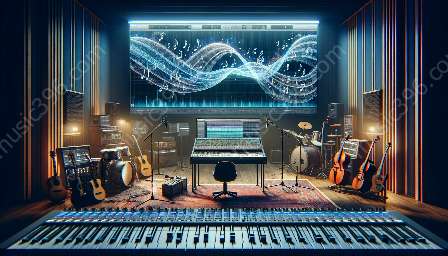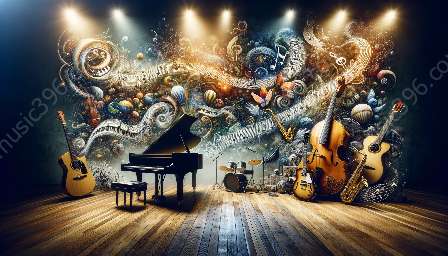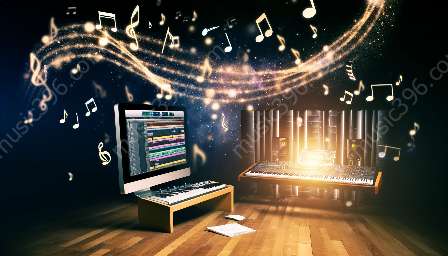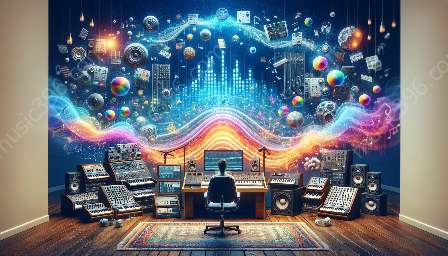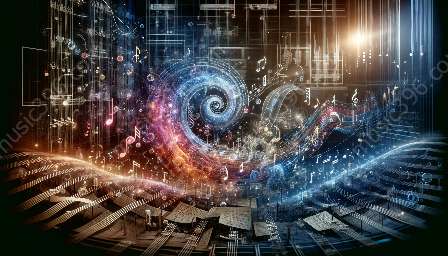Songwriting is a form of storytelling, and like any story, it can be enriched by the use of metaphor and symbolism. These creative elements have the power to evoke emotions, convey complex ideas, and create vivid imagery within a song. In this article, we will delve into the art of metaphor and symbolism in songwriting, exploring their compatibility with songwriting techniques and music composition.
The Art of Metaphor in Songwriting
In songwriting, a metaphor is a literary device that allows the songwriter to make a comparison between two seemingly unrelated things. This comparison serves to create a vivid image or convey a deeper meaning to the listener. Metaphors can be found in various aspects of songwriting, including lyrics, melody, and instrumentation.
One of the most common uses of metaphor in songwriting is in the lyrics. Through carefully crafted metaphors, songwriters can imbue their lyrics with layers of meaning and emotion. Metaphors can be used to describe feelings, experiences, or abstract concepts in a way that is relatable and impactful. For example, in the song 'Bridge Over Troubled Water' by Simon & Garfunkel, the metaphor of a 'bridge' is used to symbolize support and comfort during difficult times.
Symbolism and Its Role in Songwriting
Symbolism is another powerful tool in the songwriter's arsenal. Through the use of symbols, songwriters can imbue their music with deeper layers of meaning and significance. Symbols can be derived from various sources, including nature, culture, and personal experiences.
Symbolism in songwriting can manifest in different forms, such as recurring motifs, imagery, or allegorical storytelling. By incorporating symbols into their music, songwriters can create a sense of unity and coherence within their body of work. Symbolism can also serve as a means of engaging the listener's imagination and inviting them to interpret the music in a more personal and profound manner.
Compatibility with Songwriting Techniques
Metaphor and symbolism are inherently compatible with a wide array of songwriting techniques. They can be seamlessly integrated into various aspects of the songwriting process, from the initial concept development to the final composition and arrangement. For example, when using the technique of 'show, don't tell,' songwriters can employ metaphor and symbolism to evoke emotions and convey messages indirectly, allowing the listeners to engage with the music on a deeper level.
- Metaphor and symbolism can also be utilized in conjunction with other songwriting techniques, such as imagery, storytelling, and narrative structure. By leveraging these creative elements, songwriters can create songs that resonate with authenticity and depth.
- Furthermore, metaphor and symbolism can enhance the communicative power of a song, enabling songwriters to express complex emotions and ideas in a concise and impactful manner. Whether through subtle metaphors or evocative symbols, songwriters can craft narratives that transcend the limitations of literal language.
Integration with Music Composition
Metaphor and symbolism extend beyond the realm of lyrics and can be seamlessly integrated into the musical composition itself. In music, metaphor and symbolism can manifest through elements such as melody, harmony, rhythm, and instrumentation.
For example, a composer may use musical motifs or leitmotifs to symbolize specific characters or themes within a song. By assigning musical elements to represent conceptual ideas, composers can effectively communicate narrative arcs and emotional nuances through their compositions.
- Harmony and chord progressions can also be imbued with metaphorical significance, evoking specific moods or emotions within the listener. The interplay of dissonance and resolution in music can serve as a metaphor for personal conflicts and resolutions, creating an immersive sonic experience for the audience.
- Rhythm and tempo can further reinforce the symbolic significance of a song, influencing the pacing and energy of the music. Through the use of rhythmic metaphors and symbolic time signatures, composers can imbue their compositions with layers of narrative and emotional depth.
Conclusion
In conclusion, metaphor and symbolism are invaluable tools in the arsenal of a songwriter, offering a means of enriching their creative expression and engaging listeners on a deeper level. When integrated with songwriting techniques and music composition, metaphor and symbolism have the potential to elevate a song from mere entertainment to a profound and meaningful artistic experience. By harnessing the power of metaphor and symbolism, songwriters can guide their audience through a journey of introspection, empathy, and catharsis, creating music that resonates with enduring significance.




